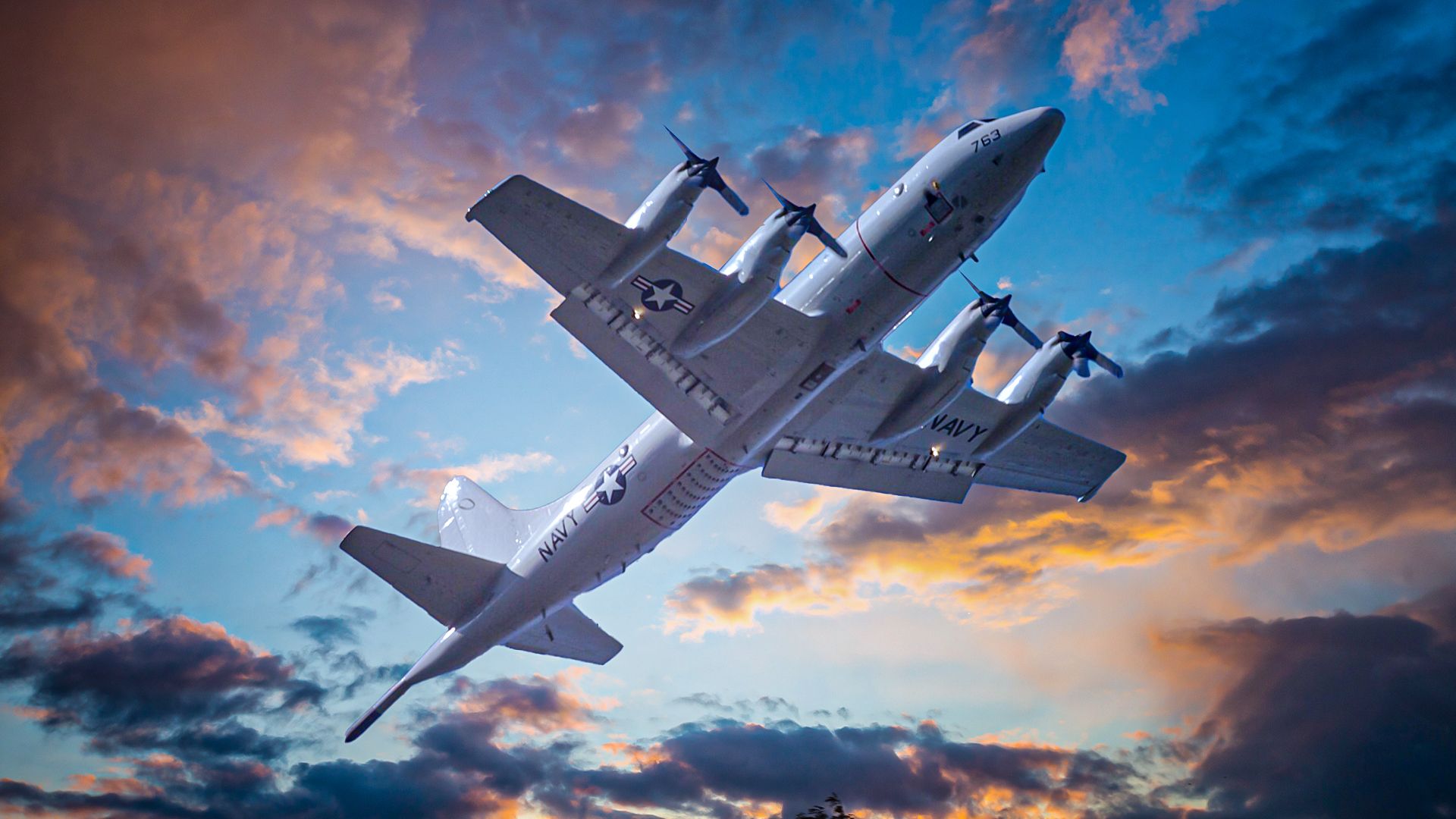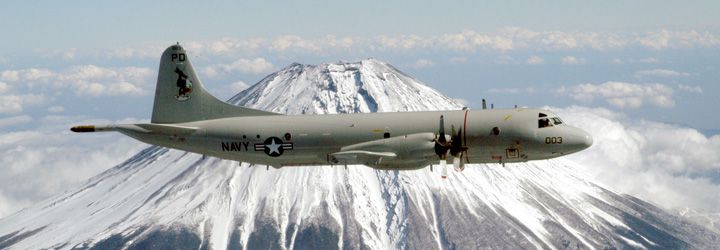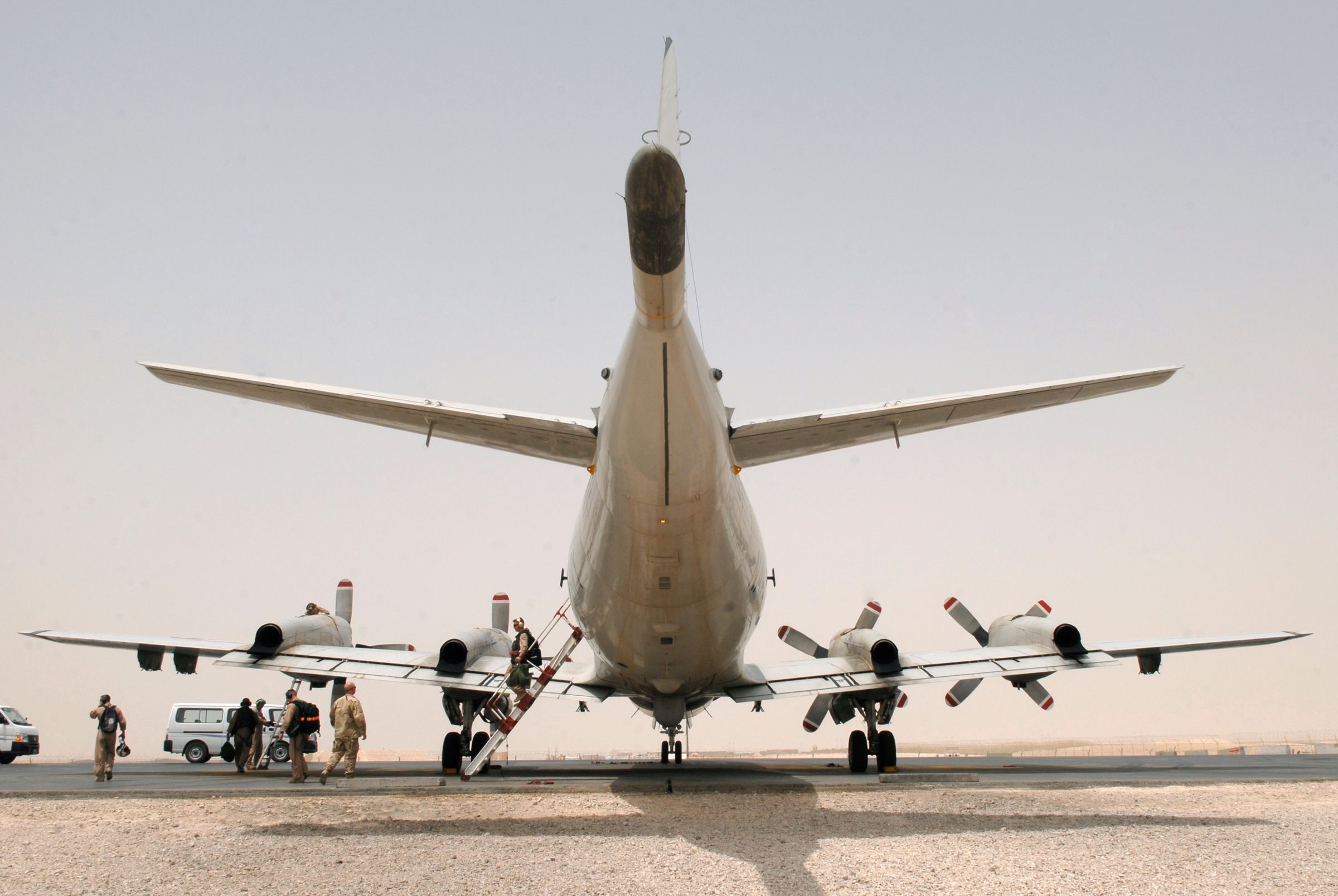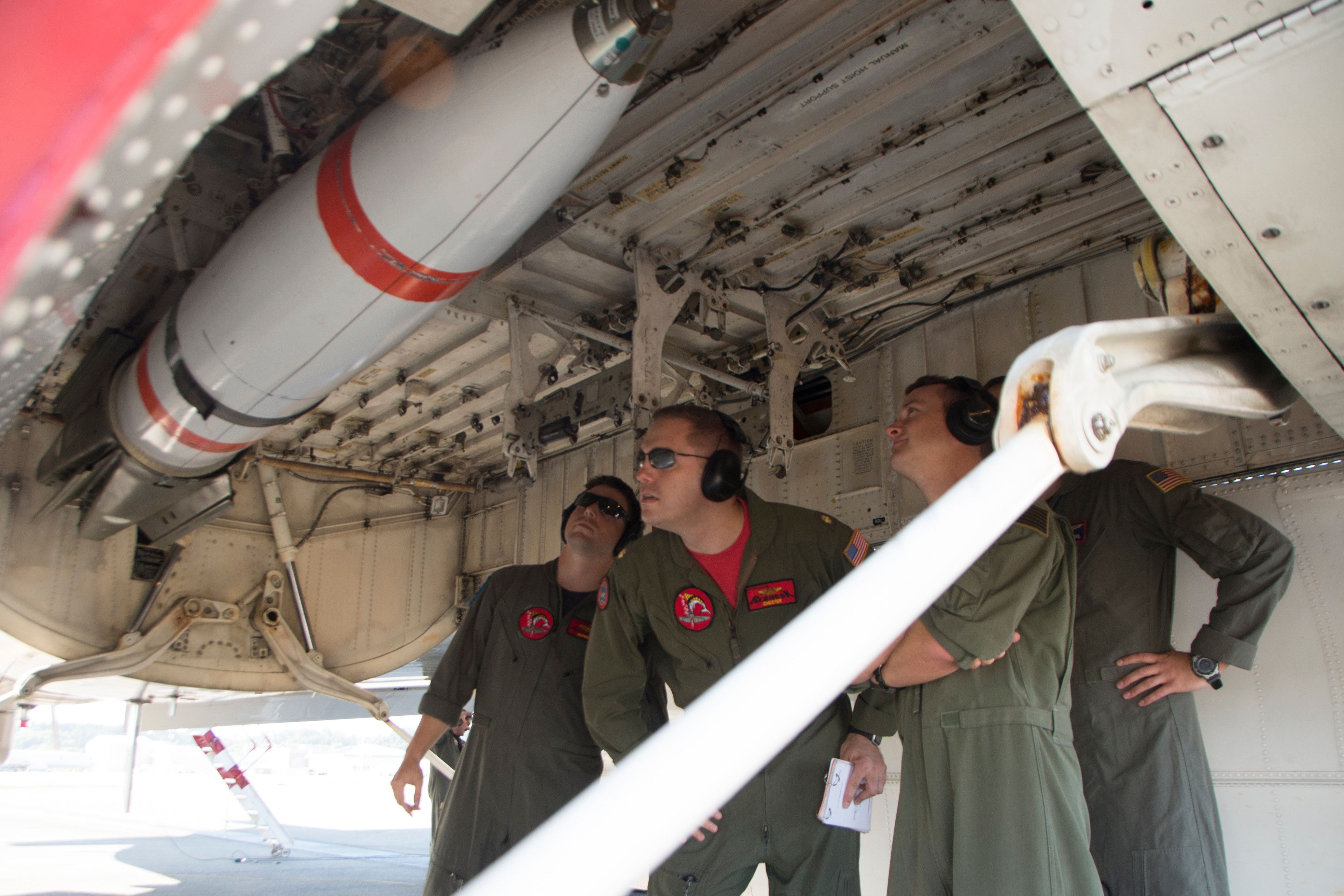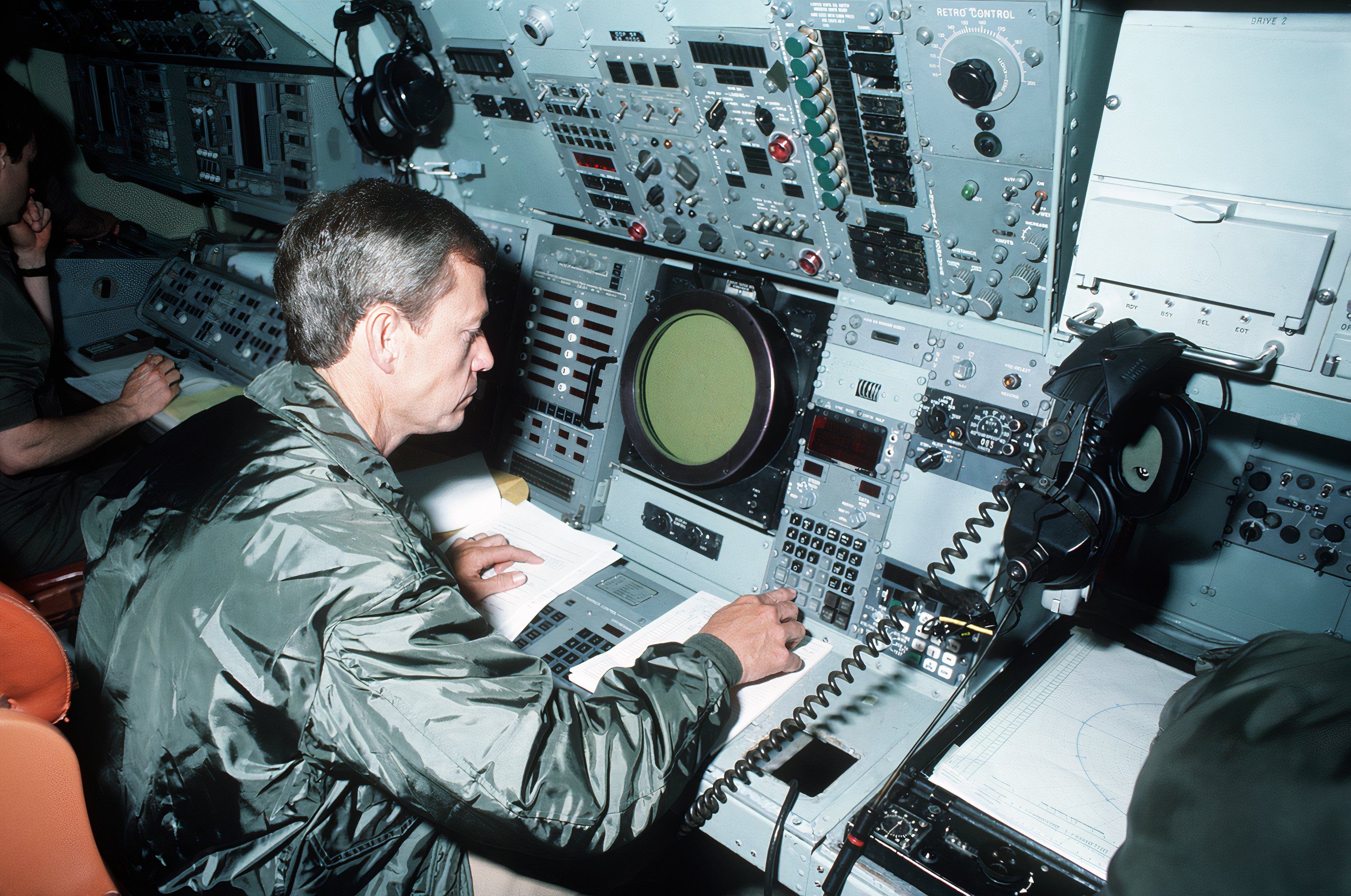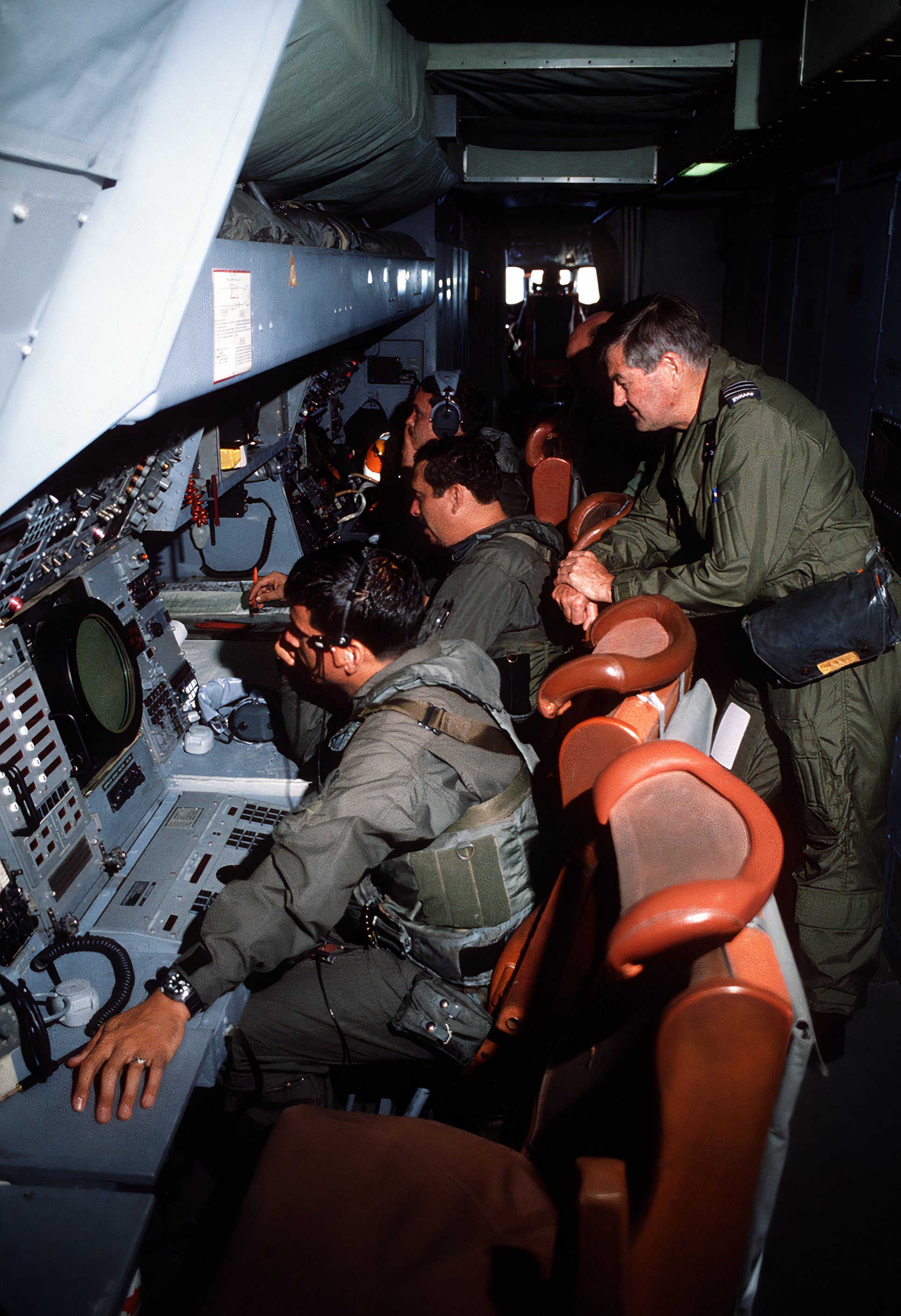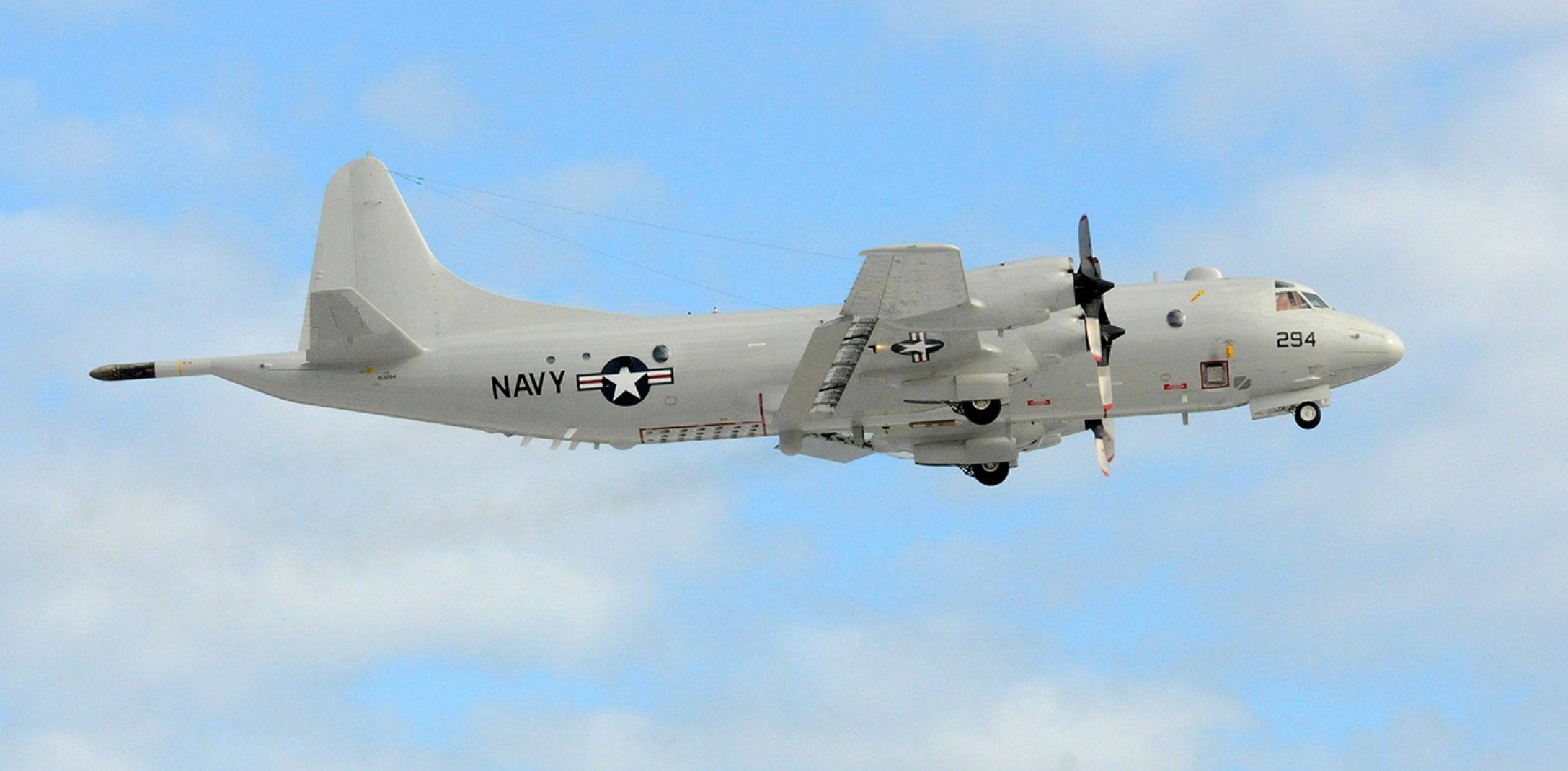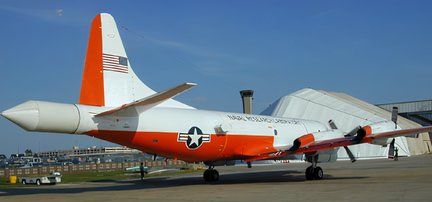Anyone who’s played the timeless strategy game, “Battleship,” understands how challenging it can be to locate a relatively small submarine among a vast sea of aqua-blue plastic. Now, imagine being tasked with finding a ballistic missile submarine carrying nuclear warheads lurking below the depths of the largest battlefield on Earth – the ocean. Enter the mighty P-3 Orion, steadfast patroller of the maritime grid.
What does the P-3 Orion do?
Named after Orion the Hunter of ancient Greek mythology, the P-3 Orion shares the same vocation. In response to advances in Soviet Navy ballistic missiles and fast attack submarine technology during the Cold War, the Lockheed Martin P-3 Orion was designed to perform Anti-Submarine Warfare (ASW) and Anti-surface Warfare (ASuW) missions for the US Navy.
Photo: US Navy
The most capable variant of the Orion is the P-3C, which became operational in 1969. The versatile P-3C Orion is capable of a variety of military missions, including:
- Submarine hunting
- Surveillance
- Reconnaissance
- Peacekeeping
- Anti-terrorism
Ballistic missile submarines are sometimes referred to as “boomers.”
The P-3C Orion shares a design philosophy similar to the Lockheed L-188 Electra, though with significant modifications, enhancements, and features, including:
- Shortened fuselage
- Internal bomb bay
- Various internal and external enhancements
- Magnetic Anomaly Detector (MAD) boom, also known as a tail “stinger”
The highly sensitive Magnetic Anomaly Detector (MAD), or “stinger,” is housed in the extended tail, far from other electronic components, to avoid electromagnetic interference. By identifying anomalies in the Earth’s magnetic field, the MAD can detect submarines hidden beneath the ocean surface.
Photo: Senior Airman Andrew Satran | USAF
Given the MAD’s relatively limited range, it is primarily used when the P-3C is flying low and slow within the vicinity of a suspected submarine just moments before an attack. This allows the P-3C to deploy depth bombs and torpedos with greater precision.
Fast and fuel-efficient
Thanks to a quartet of Allison T56 turboprop engines, the Orion achieves an impressive top speed of 411 knots, on par with the US Air Force’s A-10 Thunderbolt II fighter aircraft.
During extended missions, crews often shut down one of the engines, typically the No. 1 engine (left outboard), to conserve fuel and extend time on station at low altitudes. No. 1 engine shutdown also enhances visibility for the aft observer on that side of the aircraft. In some cases, both outboard engines can be shut down, depending on the mission and associated variables.
The Royal New Zealand Air Force’s No. 5 Squadron set a record with a P-3, staying aloft for 21.5 hours in 1972.
The P-3C boasts an internal bomb bay beneath the forward fuselage and underwing pylons that allow for a wide assortment of up to 18,000 pounds (8165 kg) of weaponry, including:
- Mark 50 or Mark 46 torpedoes
- Nuclear weapons
- AGM-84 Harpoon
- AGM-84E SLAM
- AGM-84H/K SLAM-ER
- AGM-65 Maverick
- Zuni rockets
- Sea mines
- Missiles
- Gravity bombs
- Sonobuoys
Photo: MC2 Jakoeb Vandahlen | US Navy
What are sonobuoys used for?
The directional frequency and ranging (DIFAR) sonobuoys found on the P-3C are interesting and innovative tools for underwater sound detection. Contained in canisters typically about five inches (13 cm) in diameter and three feet (91 cm) long (pictured below), sonobuoys utilize a transducer and a radio transmitter and can be deployed from aircraft altitudes up to 30,000 feet (9,144 m).
Upon entering the water, a radio transmitter tethered to an inflatable surface float is deployed and rises to the ocean surface to communicate with the aircraft while the transducer descends to a predetermined depth. The use of multiple sonobuoys can accurately pinpoint a target’s location. The P-3C Orion employs two types of sonobuoys:
1. Passive Sonobuoys
- Use a hydrophone to listen for sound energy from targets
- Detect acoustic energy from 5 Hz to 2,400 Hz
- Operate up to eight hours at depths up to 1,000 ft (305 m)
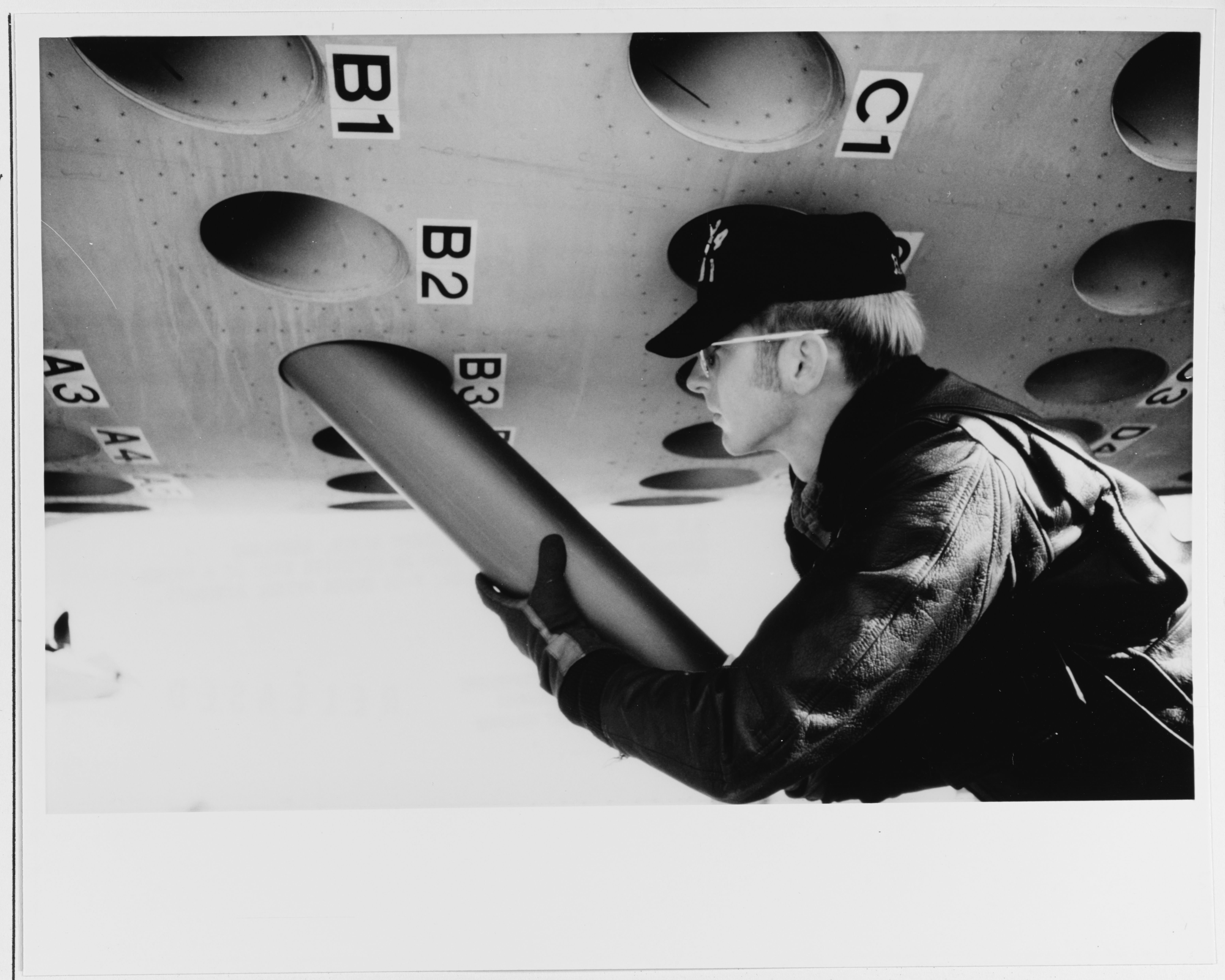
2. Active Sonobuoys
- Emit acoustic signals and listen for echoes reflecting off objects
- Receives radio transmissions for depth changes, sonar activation, or self-scuttling
- Transmits active sonar pulses at four frequencies (6.5, 7.5, 8.5, 9.5 kHz)
- Operates up to one hour at depths up to 457 m (1,500 ft)
- Provides range, bearing, and Doppler information on acoustic contacts
P-3 Orion upgrades, modernizations, and enhancements
Initially a Maritime Patrol Aircraft (MPA), the P-3 Orion has evolved into a land-and-sea patroller, thanks to the Anti-surface Warfare Improvement Program (AIP). AIP upgrades to sensors and armament allowed for extended P-3 combat air support over land and proved invaluable when P-3 aircraft played a critical role during the “Decade in the Desert,” patrolling combat zones in the Middle East and Southwest Asia.
Photo: PH1 Larry A. Franklin | US Navy
Throughout the P-3C’s time in service, the US Navy has implemented numerous modifications and upgrade programs to avionics and computer systems, along with upgrades to communication, acoustic, non-acoustic, and ordnance/weapon systems (Updates I, II, II.5, and III), ensuring the Orion keeps pace with contemporary threats.
When age became an issue, the Service Life Assessment Program (SLAP) addressed aircraft structural fatigue to inspect and replace address structural components to extend airframe life.
After weak engine mounts led to excessive vibrations, wings shearing, and three fatal incidents involving civilian Lockheed Electras in 1959-1960, Lockheed implemented an extensive modification program, strengthening the engine mounts and wing structures.
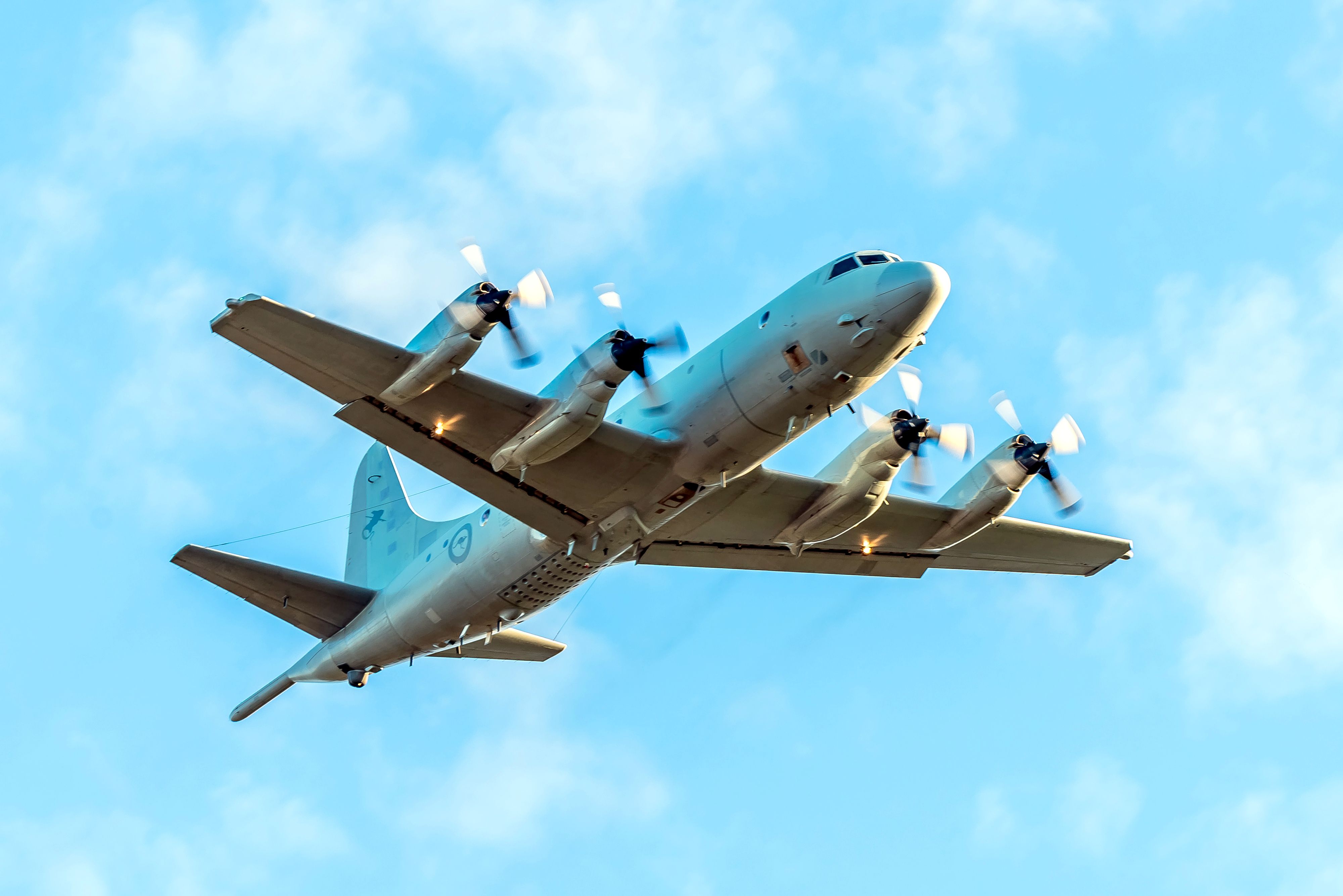
Related
HARS Opens Up Secretive P-3 Orion Sub-Hunter
The HARS Museum is giving visitors a rare opportunity to see what makes the P-3 Orion an effective submarine hunter over many years of active service
Crew aboard the P-3C
The US Navy P-3C typically operates with a crew of 11, with the senior officer taking on the role of Mission Commander (MC). However, the crew size for the P-3C varies depending on the mission and aircraft variant:
Photo: SSGT Steve Mcgill | US Navy
Naval Aviators:
- Patrol Plane Commander (PPC)
- Patrol Plane 2nd Pilot (PP2P)
- Patrol Plane 3rd Pilot (PP3P)
Naval Flight Officers:
- Patrol Plane Tactical Coordinator (PPTC or TACCO)
- Patrol Plane Navigator/Communicator (PPNC or NAVCOM)
Flight Engineers:
- Two enlisted Aircrew Flight Engineers (FE1 and FE2)
Sensor Operators:
- Radar/MAD/EWO (SS-3)
- Two Acoustic (SS-1 and SS-2)
Technician:
- One enlisted In-Flight Technician (IFT)
Ordnance:
- One enlisted Aviation Ordnanceman (ORD), though this role has since been absorbed by the IFT for cost-saving reasons.
P-3 Orion operational history
Throughout its time in service, the P-3 has played an integral role in numerous conflicts and military operations, including but certainly not limited to:
- Cuban Missile Crisis
- Vietnam War
- Iraq War
- Operation Odyssey Dawn (Libya)
- Operation Rah-e-Nijat. (Pakistan)
- Operation Ocean Shield (Somalia)
The P-3 Orion wasted no time making an impact. In October 1962, just months after its introduction, P-3 aircraft were deployed for its first significant mission during the Cuban Missile Crisis, conducting critical blockade patrols around Cuba. Shortly after, a P-3 Orion crew identified crated missiles on the Russian Freighter Anasov, confirming their retreat to the Soviet Union.
1964’s Operation Market Time saw P-3 aircraft deployed from bases in the Philippines and Vietnam, executing coastal patrol missions aimed to block sea supply routes to the Viet Cong. Occasionally, these missions extended over land. The only confirmed combat loss of a P-3 occurred during this operation from anti-aircraft fire in the Gulf of Thailand. The entire crew was lost.
When Iraq invaded Kuwait and threatened Saudi Arabia in 1990, the US Navy quickly deployed P-3C aircraft to the region, including one equipped with an experimental over-the-horizon targeting system (OTH-T) dubbed “Outlaw Hunter.” This aircraft played a crucial role at the beginning of the coalition air campaign, detecting Iraqi naval vessels attempting to flee to Iranian waters. The intelligence provided by “Outlaw Hunter” led to the destruction of 11 vessels near Bubiyan Island.
Photo: US Navy
US P-3C aircraft played an integral role throughout the Iraq War, performing reconnaissance missions over Iraq and Kuwait, identifying enemy installations, and providing real-time intelligence to U.S. ground forces. During Operation Desert Shield, a US Navy P-3C employed infrared imaging to identify a ship with fake Egyptian markings hiding its Iraqi origins. Throughout the conflict, P-3Cs were credited with targeting 55 of the 108 Iraqi vessels destroyed.
There are over 400 P-3 Orion aircraft operated by 17 countries worldwide.
In 2007, Pakistan Navy P-3C Orions aircraft performed surveillance, intelligence, and precision bombing missions during Operation Rah-e-Nijat against Taliban and al-Qaeda forces. In 2016, Amid tensions with India, the Pakistan Navy deployed its P-3Cs once more to intercept an Indian submarine loitering near Pakistani waters in the Arabian Sea, successfully forcing it away.
In 2011, Operation Odyssey Dawn called on the P-3C Orion to enforce a no-fly zone over Libya. When a U.S. Navy P-3C encountered Libyan coast guard vessel Vittoria and its convoy attacking merchant ships in Misrata, AGM-65 Maverick missiles fired by the P-3C swiftly thwarted the Libyan attack, leaving the Vittoria beached.
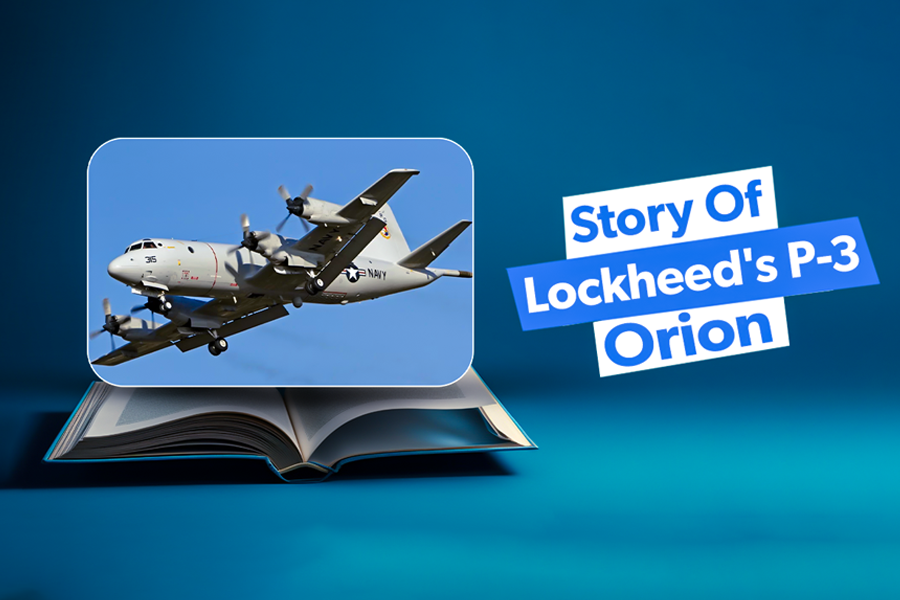
Related
Developed From The L-188 Electra: The Story Of Lockheed’s P-3 Orion
The aircraft was originally built for the US Navy.
Able to identify visual clues like extra fuel containers, ladders, and chase boats, Spanish Air Force P-3 Orions have played a major role in combating piracy off the coast of Somalia. In support of 2008’s Operation Ocean Shield, P-3 smoke bombs caused the pirates to abandon their attempt to board an oil tanker. Later, in 2009, the Spanish P-3 contributed to the capture of pirates who had attacked a German Navy tanker.
While initially designed for military purposes, P-3 aircraft are well suited for roles with a variety of civilian agencies:
- The US Customs and Border Protection uses P-3 variants for aircraft interception and maritime patrol missions
- The National Oceanic and Atmospheric Administration (NOAA) employs two WP-3D variants for hurricane research
- The U.S. Forest Service, along with other agencies, including the California Department of Forestry and Fire Protection, utilize P-3As configured as air tankers for firefighting
- NASA operates one P-3, based at Goddard Space Flight Center in Virginia, as an Earth science research platform
Photo: NASA
Additionally, P-3s have participated in humanitarian disaster relief efforts:
- Indian Ocean earthquake and tsunami in 2004
- Hurricane Katrina in 2005
- BP Deepwater Horizon oil rig disaster in 2010.
Does the US Navy still use the P-3 Orion?
After more than 50 years, the iconic P-3 Orion has been retired from active-duty service, although some Navy Reserve squadrons continue to use P-3 variants. The official final retirement of the P-3 Orion from military service is anticipated by 2025. The Boeing P-8 Poseidon, which entered service in 2013, assumes the P-3 Orion’s roles and responsibilities.
While the P-3 Orion’s days hunting submarines hidden beneath the ocean waves have come to an end, its enduring legacy lives on, as its namesake continues watching over Earth’s deep waters from the starry skies above.
FAQ
- How much does a P-3 Orion cost?
The unit cost of a P-3 Orion is $36 million.
- How many P-3 Orions have been built?
757 P-3 Orions have been built since the early 1960s.
- Can a P-3 Orion fly on one engine?
A P-3 cannot fly on just one engine, but it does have the ability to shut down up to two engines per mission requirements.
- Is the P-3 Orion a Lockheed Electra?
The P-3 Orion shares a design philosophy similar to the Lockheed L-188 Electra, though with significant modifications and enhancements.
Additional Specifications
Length: 116.7 feet (35.57 m)
Height: 33.7 feet (10.27 m)
Wingspan: 99.6 feet (30.38 m)
Maximum Takeoff Weight: 139,760 pounds (63,394 kg)

